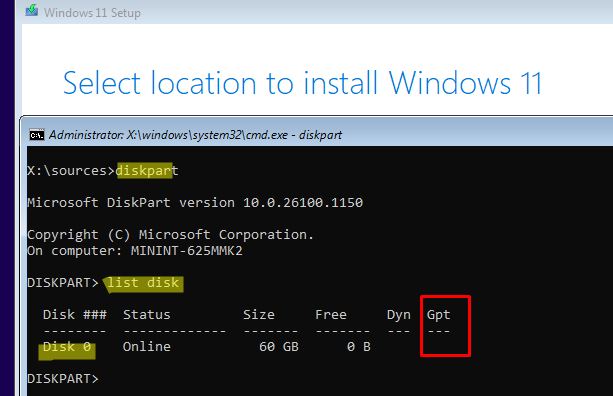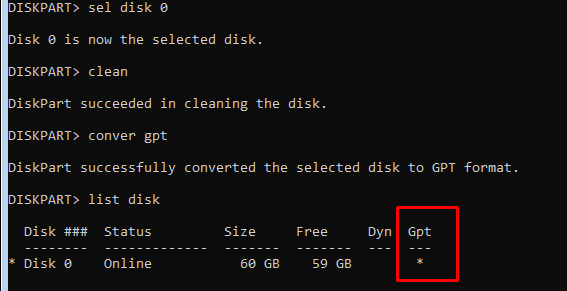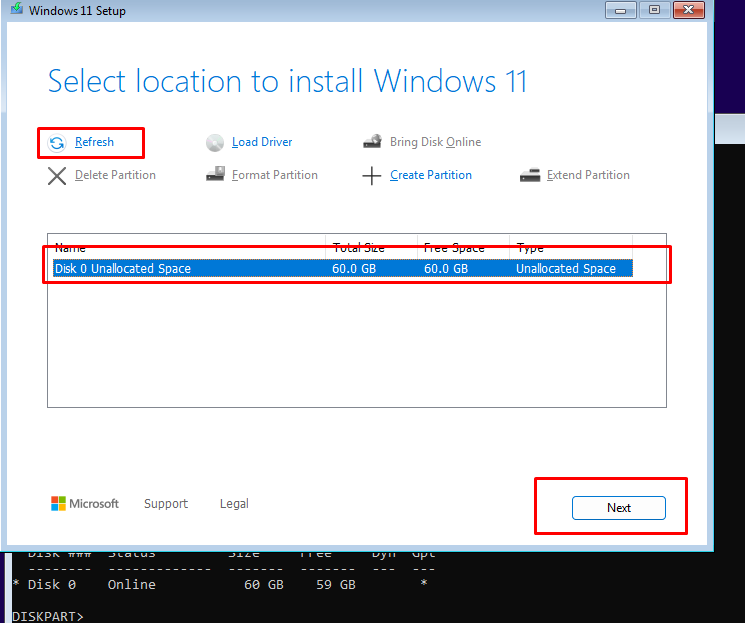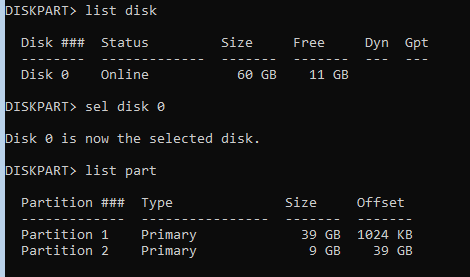В этой инструкции подробно о том, что делать, если при установке Windows вам сообщают, что невозможно установить Windows в раздел диска, а в подробностях — «Установка Windows на данный диск невозможна. Возможно, оборудование компьютера не поддерживает загрузку с данного диска. Убедитесь, что контроллер данного диска включен в меню BIOS компьютера». Похожие ошибки и способы их исправить: Установка на диск невозможна, выбранный диск имеет стиль разделов GPT, Установка на данный диск невозможна, на выбранном диске находится таблица MBR-разделов, Нам не удалось создать новый или найти существующий раздел при установке Windows 10.
Если же все-таки выбрать этот раздел и нажать «Далее» в программе установки, вы увидите ошибку сообщающую, что нам не удалось создать новый или найти существующий раздел с предложением просмотреть дополнительные сведения в файлах журнала программы установки. Ниже будут описаны способы исправить такую ошибку (которая может возникать в программах установки Windows 10 — Windows 7).
По мере того, как все чаще на компьютерах и ноутбуках пользователей встречается разнообразие в таблицах разделов на дисках (GPT и MBR), режимов работы HDD (AHCI и IDE) и типов загрузки (EFI и Legacy), учащаются и ошибки при установке Windows 10, 8 или Windows 7, вызванные этими параметрами. Описываемый случай — как раз одна из таких ошибок.
Примечание: если сообщение о том, что установка на диск невозможна сопровождается информацией об ошибке 0x80300002 или текстом «Возможно, этот диск скоро выйдет из строя» — это может быть вызвано плохим подключением диска или кабелей SATA, а также повреждениями самого накопителя или кабелей. Данный случай не рассматривается в текущем материале.
Исправление ошибки «Установка на данный диск невозможна» с помощью настроек БИОС (UEFI)
Чаще всего указанная ошибка происходит при установке Windows 7 на старых компьютерах с БИОС и Legacy загрузкой, в тех случаях, когда в БИОС в параметрах работы SATA устройств (т.е. жесткого диска) включен режим AHCI (или какие-либо режимы RAID, SCSI).
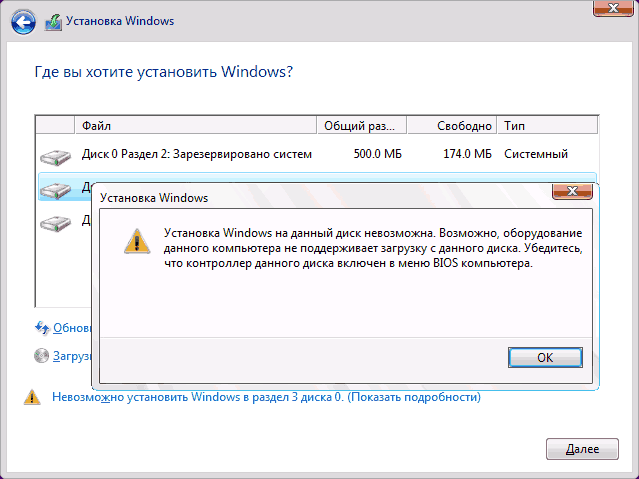
Решение в данном конкретном случае — зайти в параметры БИОС и изменить режим работы жесткого диска на IDE. Как правило, это делается где-то в разделе Integrated Peripherals — SATA Mode настроек БИОС (несколько примеров на скриншоте).

Но даже если у вас не «старый» компьютер или ноутбук, этот вариант также может сработать. Если же вы устанавливаете Windows 10 или 8, то вместо включения IDE режима, рекомендую:
- Включить EFI-загрузку в UEFI (если она поддерживается).
- Загрузиться с установочного накопителя (флешки) и попробовать установку.
Правда в этом варианте вам может встретиться другой тип ошибки, в тексте которой будет сообщаться, что на выбранном диске находится таблица MBR-разделов (инструкция по исправлению упомянута в начале этой статьи).
Почему такое происходит я и сам не до конца понял (ведь драйвера AHCI включены в образы Windows 7 и выше). Более того, воспроизвести ошибку я смог и для установки Windows 10 (скриншоты как раз оттуда) — просто изменив контроллер диска с IDE на SCSI для виртуальной машины Hyper-V «первого поколения» (т.е. с БИОС).

Будет ли появляться указанная ошибка при EFI-загрузке и установке на диск, работающий в IDE-режиме, проверить не смог, но допускаю подобное (в этом случае пробуем включить AHCI для SATA дисков в UEFI).
Также в контексте описываемой ситуации может оказаться полезным материал: Как включить режим AHCI после установки Windows 10 (для предыдущих ОС все аналогично).
Сторонние драйвера контроллера дисков AHCI, SCSI, RAID
В некоторых случаях проблема вызвана специфичностью оборудования пользователя. Наиболее распространенный вариант — наличие кэширующих SSD на ноутбуке, многодисковые конфигурации, RAID-массивы и SCSI карты.
Эта тема затронута у меня в статье Windows не видит жесткий диск при установке, а суть сводится к тому, что, если у вас есть основания предполагать, что особенности оборудования являются причиной ошибки «Установка Windows не данный диск невозможна», первым делом следует зайти на официальный сайт производителя ноутбука или материнской платы, и посмотреть, а есть ли там какие-то драйвера (как правило, представленные в виде архива, а не установщика) для SATA-устройств.
Если есть — загружаем, распаковываем файлы на флешку (там обычно присутствуют inf и sys файлы драйвера), а в окне выбора раздела для установки Windows нажимаем «Загрузить драйвер» и указываем путь к файлу драйвера. А уже после его установки, становится возможной и установка системы на выбранный жесткий диск.
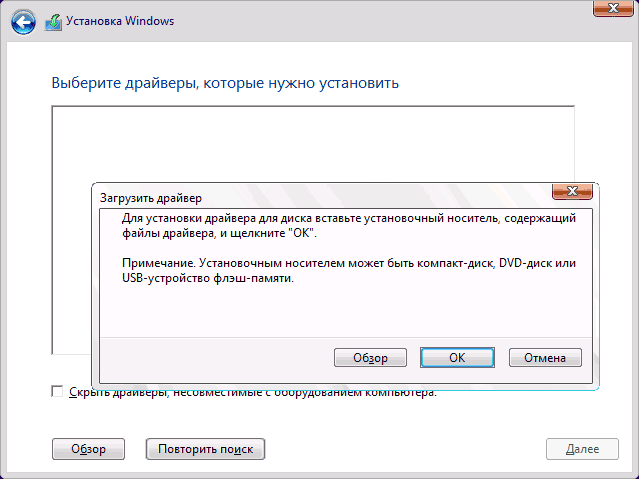
Если предложенные решения не помогают, пишите комментарии, будем пробовать разобраться (только упоминайте модель ноутбука или материнской платы, а также какую ОС и с какого накопителя устанавливаете).
При чистой установке Windows на компьютер при выборе раздела диска для установки появляется сообщение, что установка Windows на данный диск невозможна, потому что на нем используется таблица раздетом MBR:
Windows 11 can’t be installed on disk 0 partition 1 The selected disk has an MBR partition table. On EFI systems, the operating system can only be installed on GPT disks.
Невозможно установить Windows в раздел 1 диска 0. Выбранный диск содержит таблицу разделов MBR. В системах EFI операционная система можно установлена только на GPT-диск.
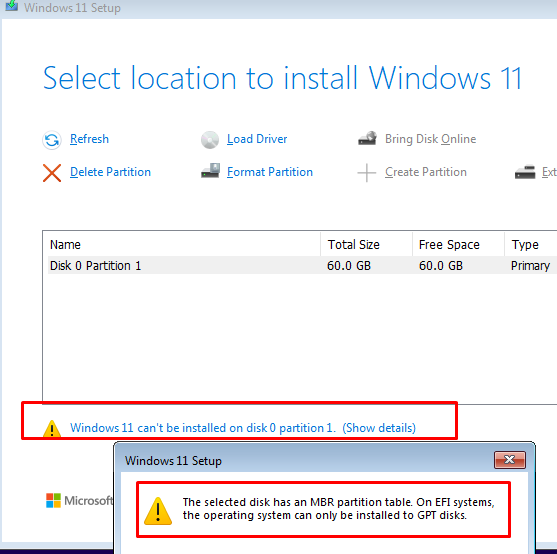
Это сообщение указывает на то, что компьютер загружен в UEFI режиме, но на диске, который вы выбрали для установки Windows, создана таблица разделов MBR. На UEFI компьютере (в нативном режиме) установка Windows возможна только на диск с таблицей разделов GPT. Возможные способы продолжить установку Windows в этом случае:
- Если на диске нет важных данных, или он пустой, можно конвертировать таблицу разделов MBR в GPT (все данные на диске будут очищены). Это самый простой и быстрый вариант.
- Если на диске имеются разделы с важными для вас данными, можно конвертировать таблицу разделов MBR в GPT без удаления имеющихся разделов на диске. Для этого потребуется некоторое время.
Еще одним вариантом является переключение в настройках BIOS/UEFI компьютера типа загрузки с EFI на Legacy BIOS (CSM). В этом случае возможна установка Windows на MBR диск. Но на современных компьютерах нет никаких преимуществ от использования устаревшей MBR в качестве таблицы разделов на диске и legacy BIOS режима загрузки. Поэтому лучше всего использовать именно GPT (GUID) таблицу разделов.
Конвертируем таблицу разделов MBR в GPT с очисткой разделов
- Прямо на экране выбора диска при установке Windows нажмите сочетание клавиш
Shift+F10
чтобы открыть командную строку - В командной строке выполните:
diskpart - Выведите список дисков компьютера:
list disk - В данном случае отсутствует символ
*
в столбце Gpt. Это означает, что на диске используется таблица разделов MBR - Выберите диск, на который будет выполняться установка диска. В нашем случае доступен только один диск Disk 0:
select disk 0 - Очистите диск (это удалит на нем все разделы и данные!!):
clean - Конвертируйте таблицу разделов в GPT:
convert gpt - Выполните команду list disk и проверьте, что для диска 0 теперь используется таблица разделов gpt (появилась звездочка)
- Сверните окно командной строки и переключитесь в окно установщика Windows. Нажмите кнопку Refresh, чтобы обновить информацию о дисках. Выберите неразмеченную область на диске 0. После конвертации таблицы разделов в GPT вы можете продолжить установку Windows на диск (кнопка Next стала активной).
Если на диске имеются данные, можно конвертировать таблицу разделов MBR в GPT без удаления существующих разделов.
- Откройте командную строку на этапе выбора диска, нажав
Shift+F10 - В современные дистрибутивы Windows 11 и 10 включена утилита mbr2gpt.exe, которая позволяет конвертировать таблицу разделов, не удаляя имеющиеся разделы.
- Проверим, что на диске используется таблица разделов MBR и созданы разделы:
diskpart
list disk
select disk 0
list part
exit
- Проверим, что возможна конвертация таблицы разделов диска 0 в GPT:
mbr2gpt.exe /disk:0 /validate
- Запускаем конвертацию:
mbr2gpt.exe /convert /disk:0 /allowFullOS - После этого можно переключиться в окно установщика и продолжить установку Windows.
Нужно отметить, что утилита mbr2gpt.exe позволяет конвертировать только системные диски, на один из разделов которых установлена Windows. Если диск не является системный, утилита вернет ошибку Disk layout validation failed.
Если вы хотите конвертировать в GPT несистемный диск, придется использовать один из бесплатных инструментов. Например, Minitool Partition Wizard, EaseUS Partition Master или Acronis Disk Director.
Скачайте загрузочный ISO образ с любой из этих утилит и запишите его на USB флешку. Загрузите компьютер с этой флешкой и выполните конвертацию MBR в GPT, выбрав соответствующий пункт в меню (на скриншоте окно Minitool Partition Wizard).
После конвертации диска вы сможете выполнить на него чистую установку Windows.
When you get the “windows cannot be installed on this drive” error, do this. This error often means there are issues with the hard disk or its setup. Common causes are wrong partition types, not enough available space or even a hardware crash.
Users frequently run into this issue when doing a clean or in-place upgrade installation. Once you understand the root cause, you are in a better position to troubleshoot. For example, making sure your drive is formatted to NTFS and has at least 8GB of free space goes a long way.
Making sure your BIOS settings are correct could be the most important step in solving this problem. In the sections that follow, we’ll go into the specific troubleshooting steps to troubleshoot and resolve the issue, paving the way for a successful installation.
Key Takeaways
- This is why knowing how to fix the error message “windows cannot be installed on this drive” is very important. Whenever it’s concerning unsupported partition styles or blocked dynamic volumes, it creates an obstacle for installation.
- Understanding the difference between MBR and GPT partition types is important for successful operating system installations. Confirm that your drive is formatted to NTFS file system before proceeding.
- Other common technical issues, like corrupted files or BIOS settings, can cause the installation error. Always verify your disk configuration and make sure it is compatible with the chosen boot mode.
- Follow step-by-step instructions to troubleshoot installation errors, such as verifying the current partition style and converting disks when needed. NOTE Always back up your data before doing anything destructive.
- Understand the dangers of repartitioning or reformatting disks. It’s important to have a data backup and to follow proper practices to get your drive ready for installation.
- If you run into particular error codes, like 0x80300001 error, do research to find out what’s causing them. Locate unallocated space and make sure you’re partitioning correctly to fix these bad boys once and for all.
Understanding the Installation Error
During the Windows installation process, encountering the error ‘Windows can’t be installed on this drive’ often points to a compatibility issue with the gpt partition style or the selected disk setup. Understanding the nuances of gpt disks and their configurations will significantly ease the troubleshooting process.
What Does the Error Indicate?
The wordy error that reads Windows cannot be installed to disk 0 partition 1 indicates that the installation procedure ran into an issue. This is blocking the installation from proceeding. This can happen because of partition compatibility errors or incorrect disk configuration.
For example, an error related to an MBR partition table might indicate that the disk is not supported by the machine’s BIOS version. This incompatibility can lead to booting or runtime failures. Dynamic volumes can add another layer of complexity, as they are usually not amenable to standard installation procedures.
Drive Formatting and Partition Types
Understanding the difference between MBR and GPT partition types is very important. MBR is the old standby, but it’s got its constraints. GPT, to be fair, is newer and more powerful.
A drive should be formatted appropriately for Windows installation, which should be NTFS to install without a problem. If your setup uses Legacy BIOS, it does not have GPT support, so you need to convert the disk to MBR.
Technical Reasons for Installation Failure
Other typical technical reasons that can cause installation hang-ups are a corrupted Master File Table (MFT) or faulty BIOS configurations. Making sure that the SATA controller is configured appropriately goes a long way.
At times, removing all partitions on the drive is necessary to install.
Drive Configuration Issues
Drive configuration issues, such as using the wrong partition style like GPT or MBR, can be very damaging to a Windows installation. Additionally, problems like disk not initialized errors can lead to a failed install. Understanding these potential gpt partition style issues is crucial for a successful setup experience.
MBR vs. GPT Partition Styles
What partitioning scheme you have matters when it comes to successful installations. MBR (Master Boot Record) is restricted to 2TB and can only have four primary partitions. GPT (GUID partition table) is more flexible and can support much bigger disks.
It allows up to a practically unlimited number of partitions. Here’s a quick comparison:
|
Feature |
MBR |
GPT |
|---|---|---|
|
Max Size |
2TB |
9.4ZB |
|
Partitions |
4 Primary |
Unlimited |
|
Boot Mode |
BIOS |
UEFI |
In contemporary systems, MBR is becoming more and more antiquated, especially when used in conjunction with UEFI firmware.
UEFI and Legacy BIOS Interactions
The decision between UEFI and Legacy BIOS makes a difference in how Windows is able to install across multiple disks. UEFI needs GPT in order to boot, but Legacy BIOS still uses MBR.
If installation fails, switching from Legacy to UEFI will often fix the problem, particularly if the target disk is GPT. Getting the boot mode to match with the disk’s partition style is important for a proper installation.
Common Drive Configurations Causing Errors
Some configurations like using dynamic disks or having multiple partitions can frequently cause installation errors. Incorrectly performed initialization can lead to compatibility problems, making the installation more difficult.
It’s important to make sure that the drive configuration is properly configured before you continue installing Windows.
Step-by-Step Solutions
When you encounter the “Windows can’t be installed on this drive” message, don’t panic. A thoughtful, systematic approach will help resolve the gpt partition style issue. Following each step carefully is crucial to prevent losing any data during the windows install.
1. Determine Current Partition Style
To start, you’ll want to check your current partition style using either Windows Disk Management or the diskpart command. Here’s how to do this:
- Press
Windows + R, typediskmgmt.msc, and hit Enter. - Right-click on the target disk and select Properties.
- Or, you can manually open Command Prompt and enter
diskpartfollowed bylist disk.
Check for an asterisk (*) under the GPT column.
2. Convert GPT to MBR Using Command Prompt
If the disk you added is GPT, then you can convert it to MBR with the diskpart command. This is a risky process that can result in data loss, so always make sure that important data is properly backed up first.
Use the following commands in Command Prompt:
diskpartselect disk [number]convert mbr
3. Convert GPT to MBR with Installation Disk
So, if a bootable USB disk with the Windows installation media is available, you can convert GPT disks to MBR format from it. Booting from the disk and choosing Repair your computer will accomplish the same.
4. Reformat Drive to NTFS
Here’s how to reformat the drive to NTFS:
Open Disk Management.
Right-click the drive.
Select Format.
Select NTFS as the file system and proceed with the formatting.
Reformatting the drive to NTFS is necessary for best Windows performance.
5. Disable EFI Boot Options
Go into your BIOS settings and turn off EFI boot options. This is known to fix some issues with installation at times.
To enter BIOS, reboot your computer and tap the correct key (typically F2 or Delete) to bring up BIOS.
Troubleshooting Specific Errors
When troubleshooting the error of ‘Windows cannot be installed on this drive,’ particularly with a gpt partition style issue, identifying specific errors is key. There are a number of errors that can be encountered during the uefi install, and each requires a careful, specific approach. Recognizing these specific error codes helps to narrow the troubleshooting process down quickly and can ultimately result in efficient solutions.
Addressing Disk 0 Partition Issues
Disk 0 typically takes center stage when it comes to the installation. So making sure that this disk is properly configured and formatted is really important. To make sure your disk is properly prepared for Windows installations, open up Disk Management.
Ensure the disk is properly initialized and formatted with NTFS. Running a disk check with built-in tools such as CHKDSK can help identify underlying problems. Addressing Disk 0 Partition Issues A healthy disk is the first step to a successful installation.
Resolving Error Code 0x80300001
Usually, error code 0x80300001 indicates issues with partitioning. Causes can be lack of free unallocated space on your disk. User should look for available partitions in Disk Management and make sure enough space is available for Windows on target partition.
Proper partitioning, with a primary partition marked as active, is required. Following a simple checklist: confirm disk allocation, format partitions, and mark the intended partition as active can resolve this error effectively.
Fixing Hardware Boot Support Problems
Hardware compatibility is one of the biggest obstacles to a successful installation. Ensure that user’s hardware requirements for Windows are not exceeded including RAM, processor, and disk space.
Having all the necessary drivers and any updated drivers on hand prior to the installation can help prevent roadblocks. Getting peripherals connected and making sure the BIOS settings are allowing the type of boot you want to do is crucial for a successful installation.
Risks and Best Practices
It may seem like a fairly simple process to install Windows on a target GPT disk, but there are many risks and best practices to consider regarding the GPT partition style. Getting familiar with these different elements is key to a seamless process that keeps your data protected.
Risks of Repartitioning or Reformatting
In addition to the usual risks associated with repartitioning or reformatting a drive, primarily data loss and system instability. If your drive has files you value, there’s no room for error as a single wrong move can result in permanent loss.
For example, if you try to repartition without doing your research, you could end up losing valuable information. Some situations, such as the need to use the drive with critical applications or data, can make repartitioning unsafe.
Taking Precautions Make sure you have everything backed up and double-checked before making any changes or repairs to your files.
Best Practices for Drive Preparation
How you prepare your drive makes all the difference between a successful Windows installation and an aborted process. First, make sure the drive is clean and void of any previous installations, as leftover files can create conflicts.
Critical steps include formatting the drive, scanning for errors, and ensuring that it works with Windows. A bullet list of steps includes:
- Backup all important data.
- Use disk management tools to format the drive.
- Run a check for disk errors.
- Confirm the drive is set as active.
Handling Disk Failure Warnings
Handling disk failure warnings correctly is important. These are necessary warnings to prevent faulty devices from being installed.
If you get a disk failure notification, abort the installation right away and check the disk. It needs to be replaced if we are to guarantee reliable performance and safe installations in the future.
Conclusion
Having to face “windows cannot be installed on this drive” error can be annoying. Once you know what’s causing them, the remedies are pretty simple. Whether it’s checking the drive format or making sure your BIOS settings are in order, doing these things can help you avoid wasting time and aggravation. As a reminder, always back up your data before making any system changes. In this manner, you save your crucial data files. As long as you follow the instructions below, you’ll be right back up and running in no time. There is a way to fix it. If you encounter difficulties, please feel free to contact us for assistance. Restoring your system to a working state should only take a few touches. Roll up your sleeves and take control of your configuration!
Frequently Asked Questions
What does «Windows cannot be installed on this drive» mean?
This error usually indicates a gpt partition style issue with the drive format, partition type, or compatibility with Windows install.
How can I fix drive configuration issues?
Ensure the drive is formatted as NTFS and is not a dynamic disk, as this is crucial for a successful UEFI install. You can reformat the target GPT disk using the Windows installation media.
What should I do if the drive is not detected?
Ensure the drive is connected, and check the BIOS settings to confirm it’s detecting the target GPT disk for the operating system installation.
Can I install Windows on an external drive?
With that in mind, no, Windows cannot be installed on a bootable USB disk, as Microsoft states it can’t be on an external drive.
What risks should I be aware of when fixing this error?
Partitioning and reformatting a target GPT disk will likely result in data loss. As a general rule, you should keep backups of any files you truly value before continuing.
Is it safe to use third-party tools for drive management?
Though many third-party tools for managing gpt disks can be useful, they can be dangerous. Just make sure you use reputable software and back up your data before playing.
How can I prevent this error in the future?
Keep your drives in good health with regular checks and updates, ensuring the correct gpt partition style to prevent installation conflicts.

Welcome everyone;
On this topic, I will show you how to fix this error “Windows Can’t be Installed on Drive 0 Partition 3” when trying to install windows 10 or windows 11 or another operating system.
When clicking on Show Details hyperlink, it says that “Windows Cannot be Installed to This Hard Disk Space. Followed by one of the following error causes:
- “The selected disk has an MBR partition table. On EFI systems, Windows can only be installed to GPT disks”
- “The selected disk is of the GPT partition style”.
- The partition was reserved by the computer’s Original Equipment Manufacturer (OEM)
- “Windows must be installed to a partition formatted as NTFS. Windows cannot be installed to this Hard Disk Space. The Partition is an EFI System Partition {ESP)”
- “BitLocker Drive Encryption is Enabled on the Selected Partition”
- “We couldn’t install Windows in the Location you Chose. Please check your Media Drive. Here’s more about what happened: 0x80300001”.
- “This computer’s hardware may not support booting to this disk. Ensure that the disk’s controller is enabled in the computer’s BIOS menu”
- “The partition contains one or more dynamic volumes that are not supported for installation.”
This topic will show you how to fix all of them one by one.
First Part: How to Fix “Windows Cannot be Installed to This Hard Disk Space ?
“Windows Cannot be Installed to This Hard Disk Space. “BitLocker Drive Encryption is Enabled on the Selected Partition”
This error can be fixed by either unlocking the encrypted partition keeping all data untouched, or by deleting the encrypted partition with removing everything on the deleted partition or disk.
Unlocking BitLocker-encrypted partition:
If you have the BitLocker Recovery Password, you can unlock your partition as followings:
- Press Shift + F12 keys from keyboard to open command prompt
- Type this command and press enter to show BitLocker status:
- MANAGE-BDE -STATUS
- Type the following command followed by the recovery password to unlock windows partition:
- MANAGE-BDE -UNLOCK E: -RP
- Replace E with the letter of locked partition in your computer
- Recovery Password is a unique 48-digits for each locked partition. It’s generated when enabling BitLocker Disk Encryption. BitLocker key can be retrieved from Microsoft account linked to the same computer or from a USB or any external drive based on wherever you or the administrator choose to save it. Refer this topic n for more details about retrieving BitLocker recovery key.
- After unlocking partition, disable BitLocker encryption using this command:
- MANAGE-BDE -PROTECTORS -DISABLE E:
- Close command prompt and then click on Refresh option on Setup Wizard Window.
- As you can see on the video, the error message disappeared after unlocking the selected partition. So, I can format or extend the selected partition, or even installing windows directly by clicking on Next button.
__________________________
Installing windows on a BitLocker-encrypted partition using Delete option:
If you are unable to get BitLocker Recovery password, you can delete the encrypted partition and then install windows. But this step will remove everything from deleted partition. To delete the BitLocker-encrypted partition, do the followings:
- Click on Delete option to remove encrypted partition and its data.
- Select the unallocated space and click on New to recreate the removed partition.
- Click on Next to start windows installation process.
Second Part: How to Fix MBR Issue: “The Selected Disk Has an MBR Partition Table. On EFI Systems, Windows Can Only be Installed to GPT Disks”?
If you are trying to install windows created in a GPT scheme while the disk on computer has an MBR scheme, you will see the following error message: “The selected disk has an MBR partition table. On EFI systems, Windows can only be installed to GPT disks”
That is because the Legacy is enabled in your BIOS settings, which accept only a Bootable USB that has an MBR disk scheme in order to install windows.
Also enabling UEFI mode in BIOS settings, will refuse windows installation from a USB created in an MBR disk scheme.
You can fix this problem by recreating a Bootable USB in MBR system, creating a hybrid USB for both GPT and MBR schemes, or by converting the internal disk to GPT system.
Creating Dual Bootable USB drive in Mobile:
To create a bootable USB that supports both MBR and GPT using your mobile, do the followings:
- Download windows 11 or Windows 10 ISO file to your mobile from official links in video description
- Install Ventoy app in your mobile and start it
- Connect a bootable USB to your mobile and allow Ventoy to access it
- Click Install button to convert the USB to bootable device and to copy the required files to the USB.
- Navigate to Copy tab and then press on + icon
- Navigate to mobile storage and load the ISO file of Windows that you have downloaded.
Creating an MBR disk scheme Using Rufus tool:
- To create a bootable USB in MBR system using Rufus tool, do the followings:
- Download Rufus tool from this link for free.
- Connect an empty USB flash drive to your computer
- Open Rufus tool and select the USB drive if not selected automatically or if there are more than one drive connected to your computer.
- Click on SELECT to load the downloaded ISO file of windows from computer
- Change Partition Scheme option to MBR and then click Start to start flashing process
- After that, boot from the USB to install windows without error message.
Note: Both Rufus and Ventoy tools are available for free, but all data on the USB will be deleted when using either tool.
Read this topic for more details about creating a bootable USB.
Converting MBR disk to GPT Without Losing Data:
- To convert your disk from MBR to GPT scheme, you have to confirm that your computer supports UEFI boot Mode, by opening BIOS settings or by searching google for your specific model.
- To open BIOS settings, do the followings:
- Power off your computer
- Power on the computer
- Immediately and repeatedly press F12 or another hot key to open BIOS settings menu.
- This is the list of hotkeys that can be used to open BIOS menu in different computers:
- Lenovo:
Desktop= F1, F2
Laptop & Notebook= F1, F2 or Nano Button - Hp:
Desktop & Generic= F10, Esc
Laptop & Notebook= F10 or Esc
Tower= F1 - Dell:
Desktop & Laptop= F2 - Asus:
Desktop= F9
Laptop & Notebook= F2 or Delete - Acer:
Desktop= F2
Laptop= F2 or Del - Samsung:
Notebook & Ultrabook= F2
Ultrabook Ative Book= F10 - Sony:
Laptop= Assist Button, F1, F2, F3 - Toshiba:
Laptop= F2
Protege, Satellite, Tecra= F1, Esc
Equium= F12 - Compaq= F10
- Fujitsu= F2
- Lenovo:
- Navigate to Advanced menu or to Boot menu and see if there is any option called Boot Mode or if there is any setting called UEFI mode.
- If the UEFI mode present in your BIOS, you can convert your disk to GPT without issue as followings:
- Press Shift + R keys to open CMD
- Type DISKPART and press Enter
- Type LIST DISK and press Enter
- In my case as you can see on the video, the size of the disks indicates that the disk number zero is the internal disk, and the disk number 1 is the USB drive.
- In addition, the USB has a GPT disk scheme as indicated by asterisk under the GPT column, while the internal disk has an MBR scheme.
- Select the internal disk using this command:
- SEL DISK 0
- Replace the 0 with the number of your disk if you have more than one disk. If you have more than one disk, select the disk you want to install windows on, according to its total size.
- SEL DISK 0
- Type LIST PART and press ENTER
- if you have more than three partitions on the selected disk, you have to delete one partition, because you can’t convert the disk to GPT if the disk has more than 3 partitions.
- But before deletion, take care of the followings:
- Copy your files to another partition as followings:
- Press Shift + R keys to open another CMD window
- Type NOTEPAD and press Enter
- From File tab, select Open option
- Click on This PC icon to show your partitions
- Copy the entire partition that you will delete or just copy the important files to external USB drive.
- The copy progress notification will not be shown, but unresponsiveness of mouse cursor is the indicator that the copy process is still on progress.
- Make sure not to delete Windows partition, Boot partition or Recovery partition.
- Deleting mentioned partitions will cause failure of disk conversion to GPT without formatting, and you will lose all data on the disk if decided to convert the disk using another method.
- So you have to identify which one is the Boot partition, which one is the Recovery Partition and which one is the Windows Partition using “DIR /A” command to show their contents.
- For example, to show contents of C partition, use this command: DIR /AC:\
- Usually:
- Boot folder indicates the Boot Partition
- Recovery folder indicates the Recovery Partition
- Windows folder, Programs & Files folder, and Users folder indicates Windows Partition.
- Usually:
- Copy your files to another partition as followings:
Open this link for more details in how to differentiate between all partitions.
- Select the partition that you will delete using SEL PART command followed by the partition number.
- In my case as you can see on the video, I deleted partition number four, using this command:
- SEL PART 4
- Type this command to delete the selected partition:
- DELETE PARTITION
- Execute LIST PART again to confirm that the partition was deleted.
- Type EXIT and press Enter to exit DISKPART
- Type BCDEDIT to determine the letter of windows partition
- In my case the D is the windows partition, so I will change CMD path to system32 folder using this command:
- CD /D D:\WINDOWS\SYSTEM32
- Now, execute this command to convert the disk from MBR to GPT without losing data:
- MBR2GPT /CONVERT
- Execute LIST DISK Command again to see if the disk converted to GPT or not:
- If the disk converted to GPT, you will see an asterisk next to the disk number 0 under GPT column.
- Now, back to BIOS settings and change Boot mode to UEFI and [(enable Secure Boot) if you are installing Windows 11].
- After that, boot from the USB to install windows without issue.
- In my case as you can see on the video, I deleted partition number four, using this command:
Third Part: How to Fix “The Selected Disk is of the GPT Partition Style” Without Losing Data?
As shown previously in the second part, you will fail to install windows in a GPT disk scheme if booting from a bootable USB with an MBR disk scheme.
- The simplest solution for this issue is by just recreating a Bootable USB in GPT system in another computer, or use your mobile to create a bootable USB that supports both GPT and MBR systems at the same time.
- Also you can fix this issue by converting the internal disk to MBR, but this conversion is strongly not recommended, because the GPT scheme has many advantages over MBR scheme in relation to boot speed, number of partitions per disk, size of each partition and many more features.
- Also and unlike conversion from MBR to GPT, converting disk from GPT to MBR will remove all data and files from all partitions on the converted disk.
- To convert your disk from GPT to MBR, do the followings:
- Press Shift + F10 to open CMD
- Type DISKPART and hit Enter
- Type LIST DISK and press Enter
- Select the disk you want to convert using SEL DISK command followed by the disk number
- In my case, I will select the disk number 0 using this command:
- SEL DISK 0
- Type CLEAN and press Enter to remove all partitions and everything from the selected disks
- Type this command to convert the disk to MBR
- CONVERT MBR
- Show the disks using LIST DISK command to confirm the disk conversion
- As you can see, the disk successfully converted to MBR system, and all partitions removed as indicated by unallocated space label on the disk.
- Open CMD again and execute DISKPART to create new partition
- Select the disk using SEL DISK command
- Create new partition using this command:
- CREATE PARTITION PRIMARY
- Type LIST VOL and press Enter
- Select the new volume using SEL VOL followed by the volume number:
- for example, if the new created volume has the number 3, so select it using this command:
- SEL VOL 3
- for example, if the new created volume has the number 3, so select it using this command:
- Format the selected volume in NTFS file system using this command:
- FORMAT FS=NTFS QUICK
Fourth Part: How to Fix “The Partition was Reserved by the Computer’s Original Equipment Manufacturer (OEM)”?
This error indicates that you are trying to install windows to a partition that is reserved to store recovery and other data of your computer. Usually, the size of this partition is smaller than the required size for windows to be installed. So try to select another partition with enough disk space, and keep OEM partition untouched.
Fifth Part: How to Fix “Windows Must be Installed to a Partition Formatted as NTFS”?
To fix this error you have to convert the file system of the disk to NTFS as followings:
- Press Shift + F10 keys to open Command prompt
- Type DISKPART and hit Enter
- Type LIST DISK and press Enter
- Select the disk using this command
- SEL DISK 0
- Show available volumes using this command:
- LIST VOL
- Determine the volume that you want to install windows on, according to its total size then select it using this command followed by the volume number:
- SEL VOL
- Format the selected partition in NTFS file system using this command:
- FORMAT FS=NTFS QUICK
- Close command prompt and back to Setup wizard
- Click Refresh option
- Select the partition again if not selected and then click on Next to start windows installation
Sixth Part: How to fix “Please Check your Media Drive. Here’s More About What Happened: 0x80300001”?
This error may appear after converting the disk to MBR or after formatting the Entire disk drive, as the temporary boot partition is removed from the formatted disk.
To fix this error, do the followings:
- Make sure you have created new primary partition after formatting the disk
- Close setup wizard menu and start installation again, so the boot partition will be recreated.
Seventh part: How to fix “The partition contains one or more dynamic volumes that are not supported for installation”?
This error can be fixed by converting the disk from dynamic to basic, but you have to make a backup copy for your files on the disk, as this conversion will remove everything on the disk.
To convert your disk to basic, do the followings:
- Press Shift + R keys to open CMD
- Type DISKPART and press Enter
- Type LIST DISK and press Enter
- The asterisk under Dynamic column indicates that the disk number zero is the dynamic one, so I selected it using this command:
- SEL DISK 0
- Execute this command to convert the disk to basic:
- CONVERT BASIC
- Execute LIST DISK again to confirm the conversion
- Close the CMD and click Refresh, so you can divide your disk or directly install windows by clicking Next
- As indicated by second part of the error message, the disk controller in BIOS settings is the most common source for this error.
Configure SATA in BIOS settings:
- If you are trying to install windows to New SSD drive or if you have updated your BIOS, you have to change SATA mode in BIOS settings as followings:
- Open BIOS settings as instructed previously
- In Lenovo and similar computers, navigate to Configuration tab to change Disk Controller mode
- Change SATA Controller Mode from Compatible to AHCI mode
- In some old HP and similar computers, the disk controller called SATA Device Mode, and can be accessed by clicking on Advanced tab and then open Device Configuration. Also the Compatible or IDE mode is called RAID Mode in such computers.
- In Dell computers, you can open the Advanced tab and then change Configure SATA as, from IDE to AHCI.
- If the mentioned options are unavailable in your computer, locate and disable any option related to the following words:
- Disk Controller
- AHCI
- IDE
- RAID
- Compatibility
- After that, navigate to Exit tab and select Exit Saving Changes option.
Reformat the disk Using Windows Integrated tool:
Another solution for this error is by formatting the disk and then recreate a primary partition as shown previously. Especially if the disk has been formatted or partitioned using a third-party app, especially when installing an older windows version such as windows 7, windows Vista or windows XP.
Disconnect the Second disk and then install windows to the Internal Disk:
In some Mac and similar models, this error may arise if you have another hard disk connected via optibay Caddy in place of DVD Drive. To fix this issue, just disconnect the OptiBay disk and install windows into the internal disk. After installing and booting windows, power off the computer and reconnect the disk.
For example, in some Mac models, this error may arise if there are more than one disk installed on your computer, especially if the second disk is connected via Optibay Caddy in place of DVD Drive. To fix this issue, just disconnect the Opti Bay disk and install windows into the internal disk. After installing and booting windows, power off the computer and reinstall the disk.
The most important cause or this issue is the SATA mode in BIOS settings. If you are trying to install an older version of windows such windows XP, you have to change SATA Controller Mode be set to IDE or compatible mode, but if you are trying to install windows 10 or windows 11, change it to AHCI.
Topics You May Like:
- How to Fix MBR2GPT Disk Layout Validation Failed for Disk 0/1
- How to fix The Selected Disk Has an MBR Partition Table
- How to Fix Can’t Delete Protected Partition Without the Force Protected Parameter Set
VIDEO:
For more details about how to fix Windows cannot be Installed on drive 1 Partition 2, watch this video:
Please follow and like us:
Are you having problems installing Windows on your target GPT or MBR drive? On this page, we’ll thoroughly discuss this issue in two parts and you can follow to find respective solutions toward different errors.
| Workable Solutions | Step-by-step Troubleshooting |
|---|---|
| Fix Can’t Install Windows on GPT Disk | Fix 1. Convert GPT Disk to MBR Disk using EaseUS Partition Master…Full steps Fix 2. Enable UEFI Boot Option in BIOS…Full steps Fix 3. Convert MBR to GPT via EaseUS Partition Master…Full steps Fix 4. Convert MBR to GPT using DiskPart…Full steps |
| Fix Windows Cannot Be Installed the This Disk | Fix 1. Convert Dynamic Disk to Basic Disk…Full steps Fix 2. Remove HDD Protection and Change SATA Controller Mode…Full steps Fix 3. Repair Your HDD…Full steps Fix 4. Format the Partition to NTFS…Full steps |
Check out and find the easiest solution to resolve your problem, installing Windows on your PC without any issue now.
Note that if you have saved important data on the target disk, back up your data first as some of the following fixes may remove data on your target drive.
Part 1. Fix «Can’t Install Windows on GPT Disk» Error
Applies to: Fix «Windows Cannot Be Installed on GPT Partition Drive’ or «Can’t Install Windows on GPT» error.
Problem: Can’t Install Windows on GPT Disk
«I’m trying to install Windows 10 on a new SSD, but the computer keeps giving me this message ‘Windows cannot be installed on this disk. The selected disk is of the GPT partition style.’ What does this mean? Do I have to convert the GPT disk to MBR? Or to enable UEFI boot mode in BIOS?«
You won’t be able to install Windows on GPT disk if you are receiving this notice from your PC as listed below:
Error 1. «Windows cannot be installed to this disk. The selected disk is of the GPT partition style.»
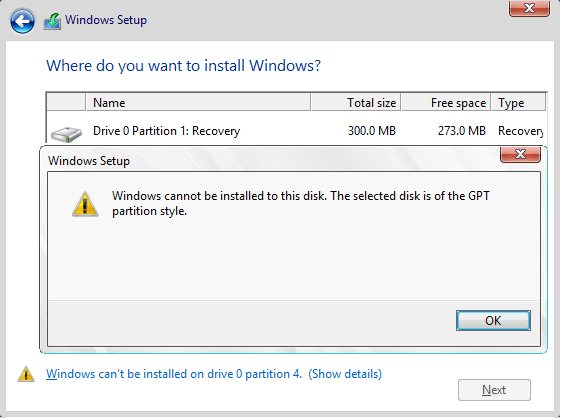
Error 2. «Windows cannot be installed on this disk. The selected disk has an MBR partition table. On EFI systems, Windows can only installed on GPT disks».
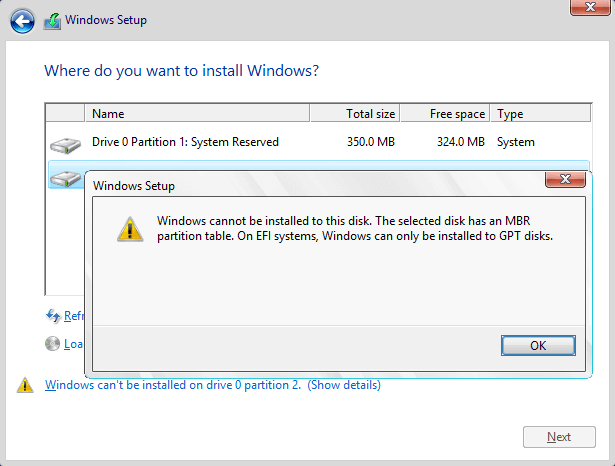
Those two errors mean that the Windows cannot be installed on GPT drive. Don’t be panic. In the following, we’ll explain why you cannot install Windows to the selected disk and list practical solutions to help you out.
You May Also Like:
Why You Fail to Install Windows on GPT Drive
1. You forget to enable UEFI boot option. Or the motherboard supports Legacy BIOS only. (Error 1)
2. If you receive Error 2, you must learn something about UEFI and BIOS. Know the differences and relations between them.
Usually, when you install Windows on UEFI-based PC using Windows Setup, the target disk must be set up to UIEFI mode or BIOS compatibility mode. If your computer is booted in UEFI mode,while your target disk is not configured UEFI mode, you’ll met Error 2.
4 Fixes to Resolve «Cannot Install Windows on GPT Disk» Error
Here, we’ll provide you with 4 effective methods to fix this error issue and relative errors. Note that the former method is presented, the higher success rate it will be.
Fix 1. Convert GPT Disk to MBR Disk using EaseUS Partition Master [Error 1]
When the computer doesn’t support UEFI, you cannot install the Windows on GPT drive unless you convert the disk from GPT to MBR.
Professional partition manager software — EaseUS Partition Master can organize your hard drive and change the partition style easily. You can easily convert GPT to MBR with the help of this software, making disk available to install Windows again:
Step 1. Install and launch EaseUS Partition Master on your computer, go to the Disk Converter section.
Step 2. Select «Convert GPT to MBR» and click «Next» to continue.
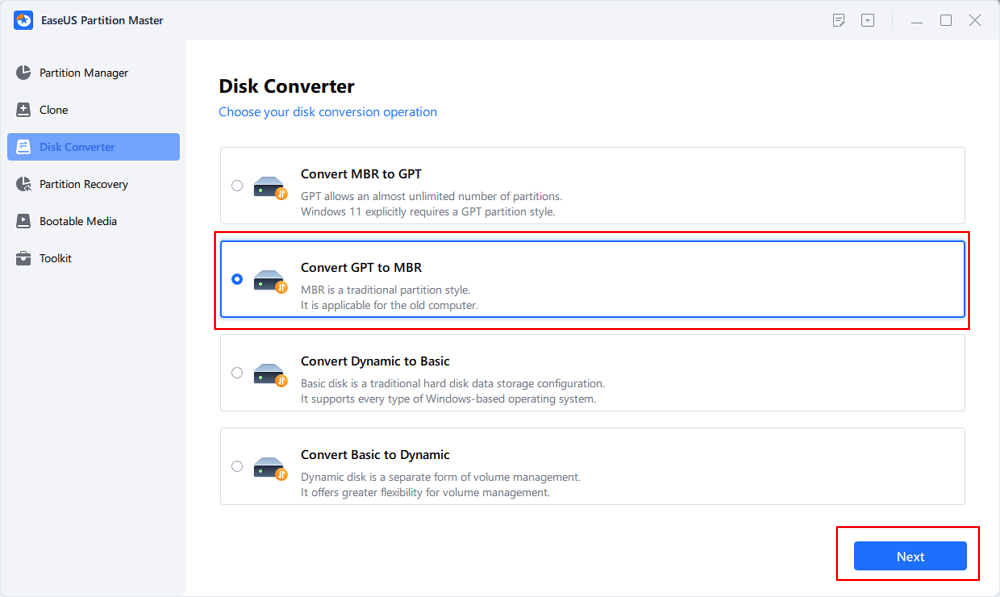
Step 3. Select the target GPT disk that you want to convert to MBR, and click «Convert» to start the conversion.
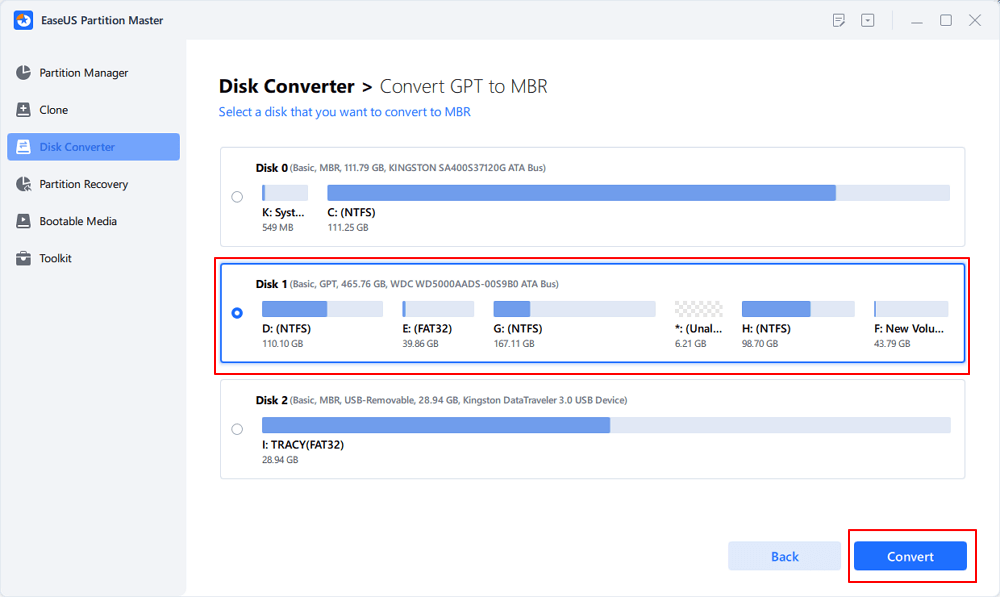
Read Also: Windows 10 Won’t Install on SSD
Fix 2. Enable UEFI Boot Option in BIOS to Fix Windows Cannot Install on GPT Drive Error
If you are faced with Error 1 — «Windows cannot be installed to this disk. The selected disk is of the GPT partition style.», you can boot to UEFI mode if your motherboard supports UEFI.
Step 1. Reboot the PC and press the key that opens the boot device menu. You can press the Esc, F2, F9, F12, or another key to enter the boot menus.
Step 2. Boot into UEFI mode and locate the boot options menu.
Step 3. Confirm in the Boot Priority List that the USB UEFI OS Boot option is at the top of the list. Save your changes and continue to install Windows.
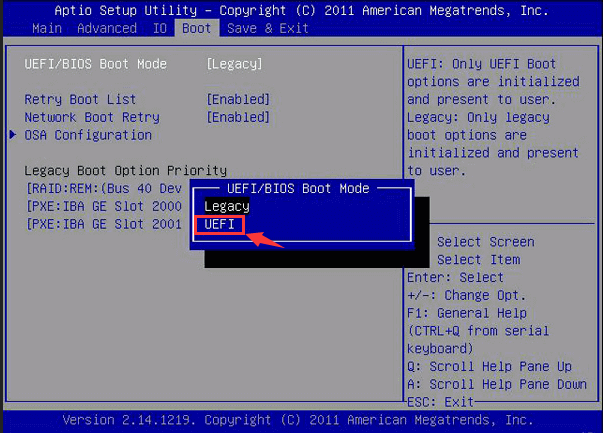
Fix 3. Convert MBR to GPT to using EaseUS Partition Master
If you encounter Error 2, you can fix the «The Selected Disk Has an MBR Partition Table» error by converting MBR disk to GPT disk.
On the UEFI system, Windows can only be installed to GPT disks or something similar. That’s because MBR is compatible with BIOS while GPT is compatible with UEFI.
The steps are similar to those of converting GPT to MBR. The difference is that you need to convert to GPT with the help of EaseUS Partition Master:
Step 1. Download and launch EaseUS Partition Master on your computer.
Step 2. Go to Disk Converter, select «MBR => GPT» and click «Next» to continue.
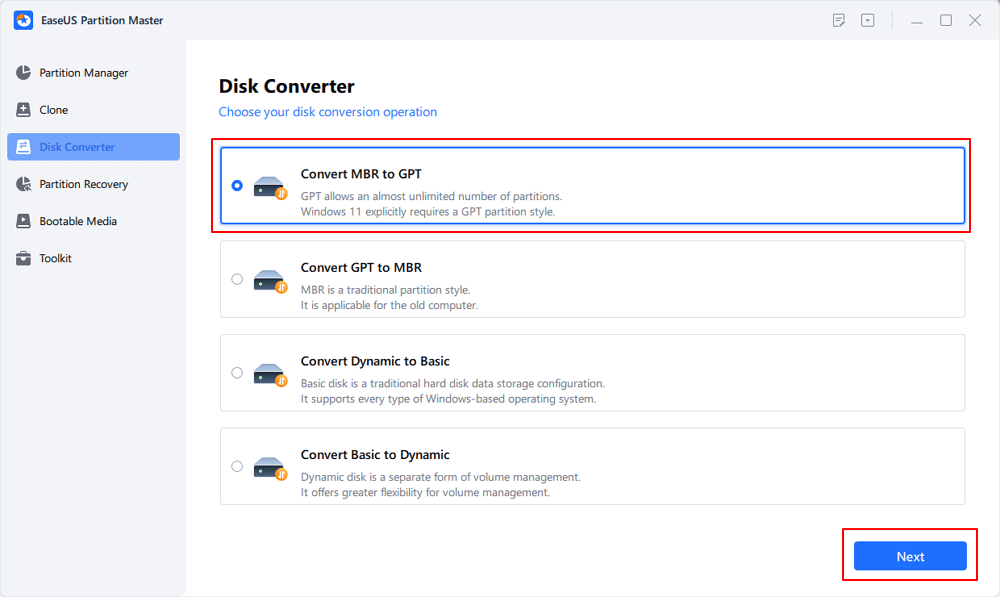
Step 3. Select the target MBR disk that you tend to convert to GPT, and click «Convert» to start the conversion.
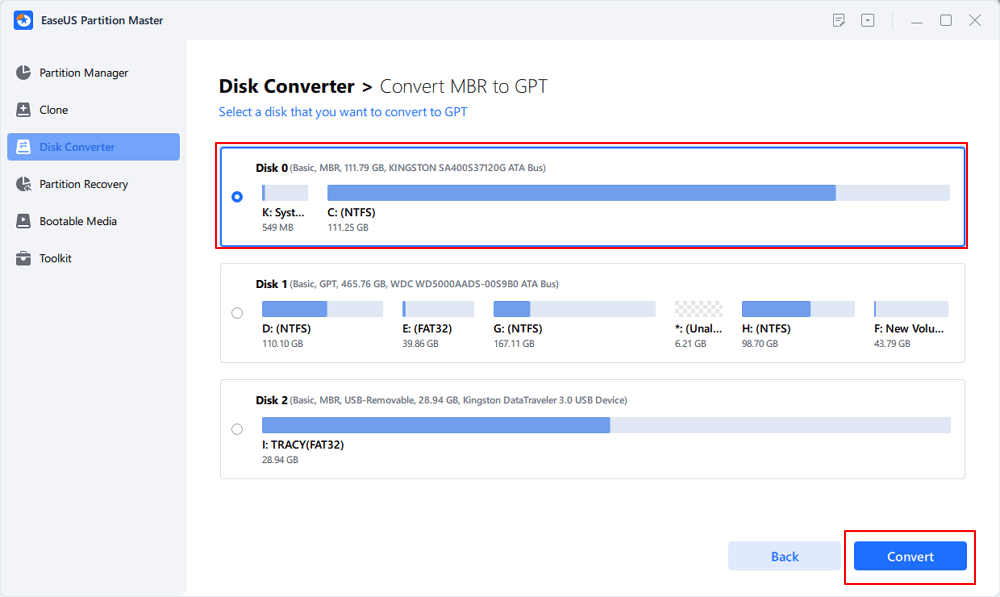
You May Also Like:
Fix 4. Convert MBR to GPT using DiskPart
Aims to resolve Error 2.
Step 1. Turn off the PC and put in the Windows installation DVD or USB.
Step 2. Boot the PC from the DVD or USB.
Step 3. In Windows Setup, press «Shift + F10» to start Command Prompt.
Step 4. Enter the following command in order:
- diskpart
- list disk
- select disk
- clean
- convert gpt
- exit
Step 5. Close Command Prompt.
After removing «Can’t install Windows on GPT disk» error, you can now continue installing Windows on your PC. You can refer to Install Windows 10 on GPT disk for a detailed tutorial guide.
Part 2. Fix «Windows Cannot Be Installed the This Disk» Error
Applies to: Fix «Windows Cannot Be Installed to This Disk» Error.
Error: Windows Cannot Be Installed to This Disk
When you are going to install Windows 10/8/7, you might receive different kinds of errors saying Windows cannot be installed to this disk. Here are some common errors that you might receive:
Error 1. «Windows cannot be installed to this hard disk space. The partition contains one or more dynamic volumes that are not supported for installation».
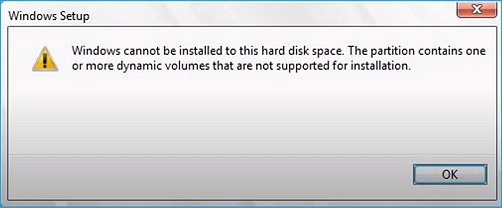
Error 2. «Windows cannot be installed to this disk. This computer’s hardware may not support booting to this disk. Ensure the disk’s controller is enabled in the computer’s BIOS menu.»
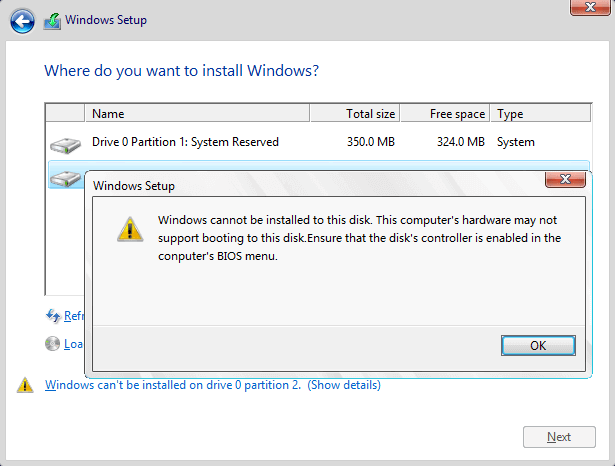
Error 3. «Windows cannot be installed to this disk. The disk may fail soon. If other hard disks are available, install Windows to another location.»
Error 4. «Windows cannot be installed to the hard disk space. Windows must be installed to a partition formatted in NTFS.»
Why Windows Cannot Be Installed to The Selected Disk
Why you could receive these errors? What are the main reasons? According to the error messages, the main reasons are as follows:
1. Users can only make a fresh install on a dynamic volume only when the volume was converted from a basic disk and was a boot partition or system partition. (Error 1)
2. Hardware protection and SATA Controller mode could bring up Error 2.
3. If you get Error 3, you can take your hard disk failure into account.
4. An incompatible file system of the partition to be installed with Windows. Microsoft rules that Windows must be installed to a partition formatted in NTFS since Windows Vista. (Error 4)
You can now selectively choose one of the solutions to fix Windows cannot be installed to the disk issue on your own PC.
Fix 1. Convert Dynamic Disk to Basic Disk
If you receive Error 1 — «Windows cannot be installed to this hard disk space. The partition contains one or more dynamic volumes that are not supported for installation», convert dynamic to basic disk.
EaseUS Partition Master also helps you convert dynamic disk to basic disk easily and quickly.
Here are the detailed steps:
Step 1. Install and open EaseUS Partition Master and go to Disk Converter.
Step 2. Select the disk conversion mode that suits your need:
- Convert Basic to Dynamic: change a Basic disk to Dynamic.
- Convert Dynamic to Basic: change a Dynamic disk to Basic.
Step 3. Select the target disk — Basic or Dynamic, confirm you’ve select the correct disk and click «Convert» to start.
Convert Basic to Dynamic Disk
Convert Dynamic to Basic Disk
Fix 2. Remove HDD Protection and Change SATA Controller Mode (for Error 2)
If you receive this message «Windows cannot be installed to this disk. This computer’s hardware may not support booting to this disk. Ensure the disk’s controller is enabled in the computer’s BIOS menu.» — Error 2, you should do two things:
Phrase 1. Remove Hard Disk Protection
Check if your hard disk protection is enabled. If it is, contact the salesperson and remove the protection according to his instructions.
Here is a quick guide that you can follow to remove write protection from hard drive using DiskPart:
Step 1. Start > Run -> type CMD and press enter.
Step 2. Type diskpart and press enter.
Step 3. Type the following command lines and hit enter each time:
- list volume
- select volume # (# is the number of your HDD.)
- attributes disk clear read-only
- clean
Step 4. Type exit and hit Enter. Close DiskPart to finish the process.
After this, you’ve successfully removed write protection from your hard drive. If you need more practical solutions, refer to How to Remove Write Protection on SSD for help.
Phrase 2. Change SATA Controller Mode
This error may indicate that the BIOS settings of your computer are not properly configured. Make sure you have changed the SATA Controller mode in BIOS. Then, you can try setting BIOS to the factory and go back to the default setting.
Fix 3. Repair Your HDD to Fix «Windows Cannot Be Installed to the Hard Disk Space»
Error 3 — «Windows cannot be installed to this disk. The disk may fail soon.» occurs when there’s something wrong with your HDD. What to do with a dying HDD? How to repair it? You should stop Windows installation and then clone or back up important data immediately. Then, you can start repairing your HDD.
Also read: How to Repair HDD without losing data
Fix 4. Format the Partition to NTFS
This method aims to solve Error 4. When partitions on the target disk are not with the NTFS file system, Windows cannot be installed to the disk.
Changing a volume’s file system is not an easy task for those who are not familiar with computer management and command line. Thus, an easy and safe solution is needed.
Comprehensive partition manager software — EaseUS Partition Master can fully meet this requirement. It enables you to format HDD to NTFS easily.
For this case, you need to create a bootable drive and then format hard drive from USB.
After fixing Windows cannot be installed to this disk or GPT/MBR drive error, you can then continue installing Windows on your target disk in your PC.
Manual Service for Fixing ‘Can’t Install Windows On GPT’ or ‘Windows Cannot Be Installed’ Error
Alongside following the above-provided solutions, you still have another option, which is to customize a manual service and let EasUS experts resolve this issue for you. You no longer need to worry about taking a wrong step while following the guidelines above. Everything can ben efficiently resolved and Windows can run on your GPT disk successfully.
EaseUS experts are available to provide you with 1-on-1 manual services (24*7) and help fix different Windows configuration issues. Our experts will offer you FREE evaluation services and efficiently diagnose and resolve Windows update errors, Windows installation, or daily OS issues using their decades of experience.
- 1. Fix Windows update errors, such as update failure, unable to upgrade Windows, etc.
- 2. Serve to download and install the latest Windows operating system on PC with success.
- 3. Provide fixes for daily Windows system errors with drivers, permission, account settings, etc., issues.
Conclusion
This page covers 4 fixes to get rid of «Can’t install Windows on GPT disk» error and 4 practical methods to remove «Windows cannot be installed to the drive» error for all levels of Windows users.
If you are faced with any one of the errors, you can find answers here. If your target disk has unsupported partition styles disallow you installing Windows on it, EaseUS Partition Master helps convert GPT to MBR, Convert MBR to GPT, and even change Dynamic to Basic disk.
This software plays an important role during the fixing process. Why not get it now.
Extended Reading: Cannot Install Windows FAQs
Besides the above issues, if you have further concerns about installing Windows on GPTor MBR disk, check the questions and answer below.
You may get a clue:
1. How do I fix Windows cannot be installed to this disk MBR?
How do you fix ‘Windows cannot be installed to this disk’? The solution is easy to conclude: change MBR to GPT.
Here are two methods that you can try:
- Method 1. Change MBR to GPT using EaseUS Partition Master (as presented on this page in Fix 3 Part 1)
- Method 2. Run DiskPart to change MBR disk to GPT (as presented on this page in Fix 4 Part 1)
2. Can GPT boot into Windows?
Yes. GPT can be used to boot Windows OS as long as you have a Windows system installed on the disk or you have migrated your computer operating system on the disk.
If you need a guide to migrate OS to GPT, follow this link for help: How to Move Windows 10 to Another Drive (HDD/SSD).
3. How do I change GPT partition to BIOS?
Mostly, GPT partition supports UEFI boot mode and BIOS compatibility mode. In order to change GPT partition to Legacy BIOS mode, you need to follow the following tips:
- #1. Check if your computer motherboard supports BIOS boot mode. (Check BIOS)
- #2. If the motherboard supports BIOS boot, then you need to check if your disk is with the MBR partition style.
- If not, convert GPT to MBR disk using provided method on this page in Part 1.
- #3. Install Windows that support BIOS boot on the disk.
- #4. Finish Windows installation, enter BIOS and set the computer to boot on the MBR disk which was with GPT partition.
- #5. Save the changes, and restart PC.

